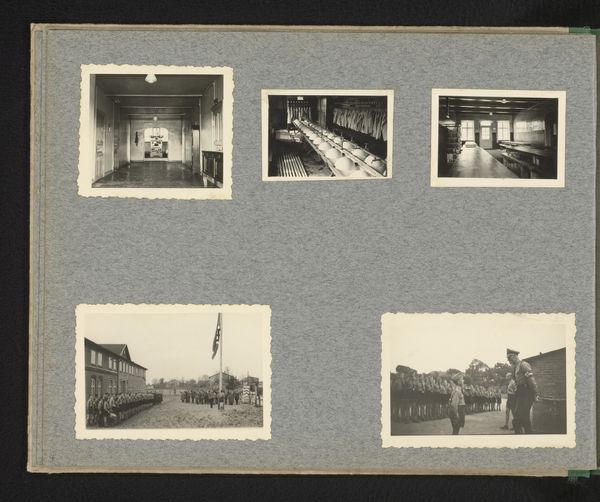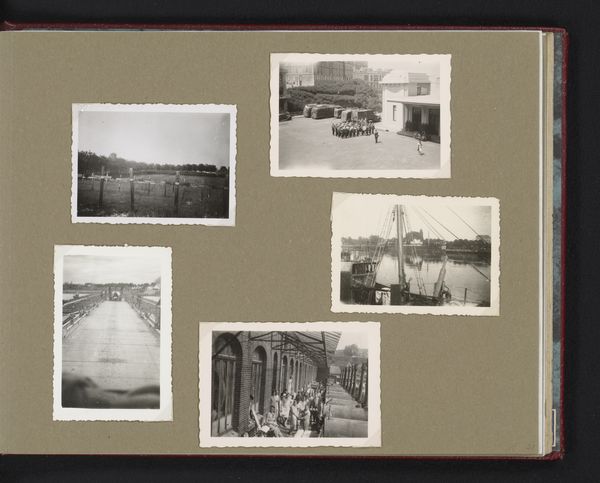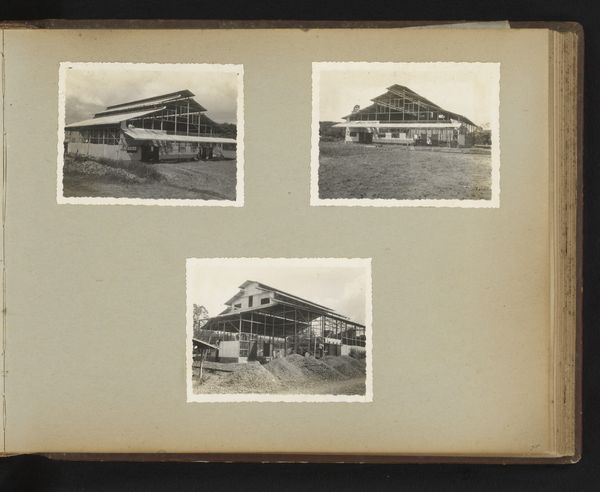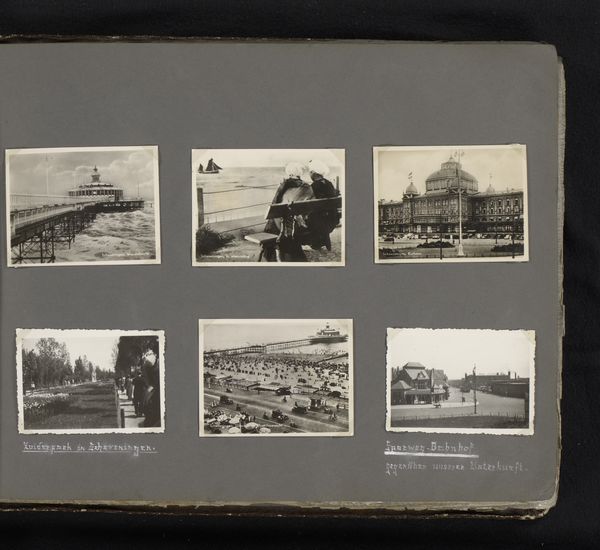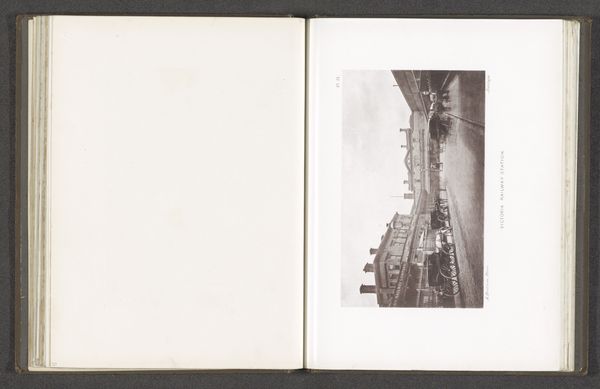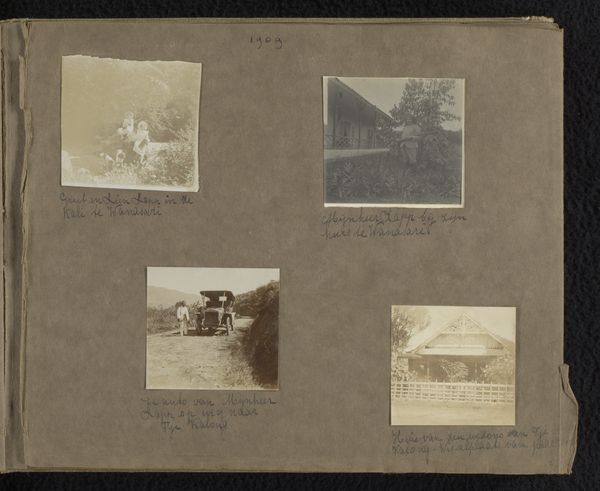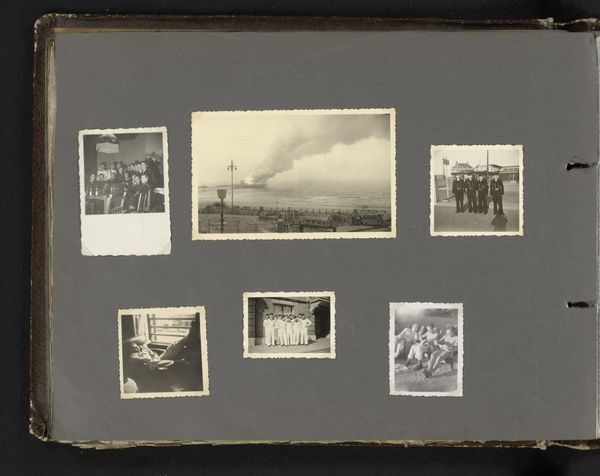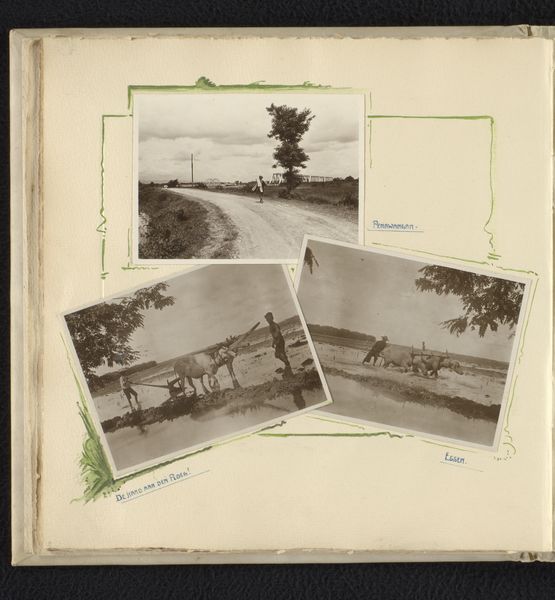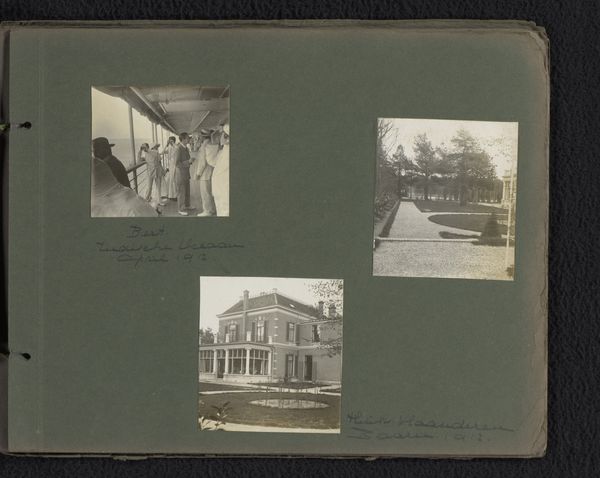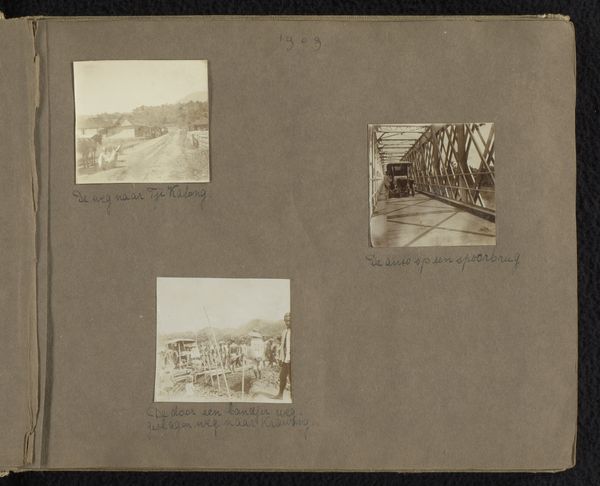
Dimensions: height 65 mm, width 90 mm, height 207 mm, width 260 mm
Copyright: Rijks Museum: Open Domain
Curator: Look at this fascinating photographic collection, simply titled “Landjahrlager 1935 in Wolmersdorf,” dating back to between 1935 and 1938, rendered as an albumen print. Editor: Woah, a wave of organized dread washes over me. I see conformity staring back. Is it the stark uniformity of the buildings or that looming flag in one of the images? The cloud composition seems to scream. Curator: The images document a “Landjahr” camp, rural education camps implemented during the Nazi era, to indoctrinate youths. That starkness echoes the regime’s austere aesthetics but also its ambition to control. You immediately pick up on the sense of institutional control, and yes, that flag… It serves as a strong visual. Editor: Right. I can't help but notice the contrast – almost like visual propaganda versus the banality of everyday life, even in indoctrination. One shot has those cold barracks; in another, they are trying to have it appear almost domestic. Curator: You've got it exactly! Consider that photographic albums, in their creation and arrangement, were deeply personal records, like contemporary blogs or scrapbooks. So it begs the question what prompted the album’s creator to preserve, possibly celebrate, but potentially also document this experience of political propaganda. And the German Expressionism lends itself perfectly to this interplay between what is captured and what is revealed through it. Editor: I imagine holding that old album and feeling so conflicted. Photography can hold many meanings. We are observers of these places as distant viewers. The shadows and sharp angles amplify that eerie tension and those tight beds, like cells of the spirit, chilling stuff. It gets me how it's been assembled in a regular pattern; there’s almost something too tidy about it that reflects on what the Nazis valued: discipline and rigidity. Curator: It highlights how photography itself became an ideological tool in the era of social upheaval, while those seemingly neutral documentary images carry deep political weight. They offer a poignant window into that period that encourages a profound moment of reflection. Editor: Indeed. An uncomfortable beauty reflecting a haunting past—a paradox worth remembering and examining in ourselves too.
Comments
No comments
Be the first to comment and join the conversation on the ultimate creative platform.
